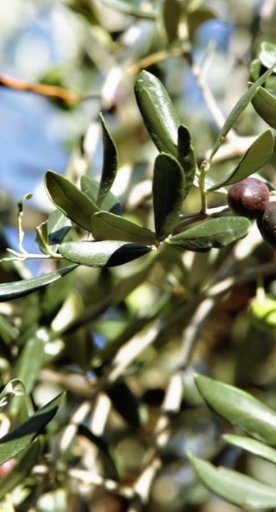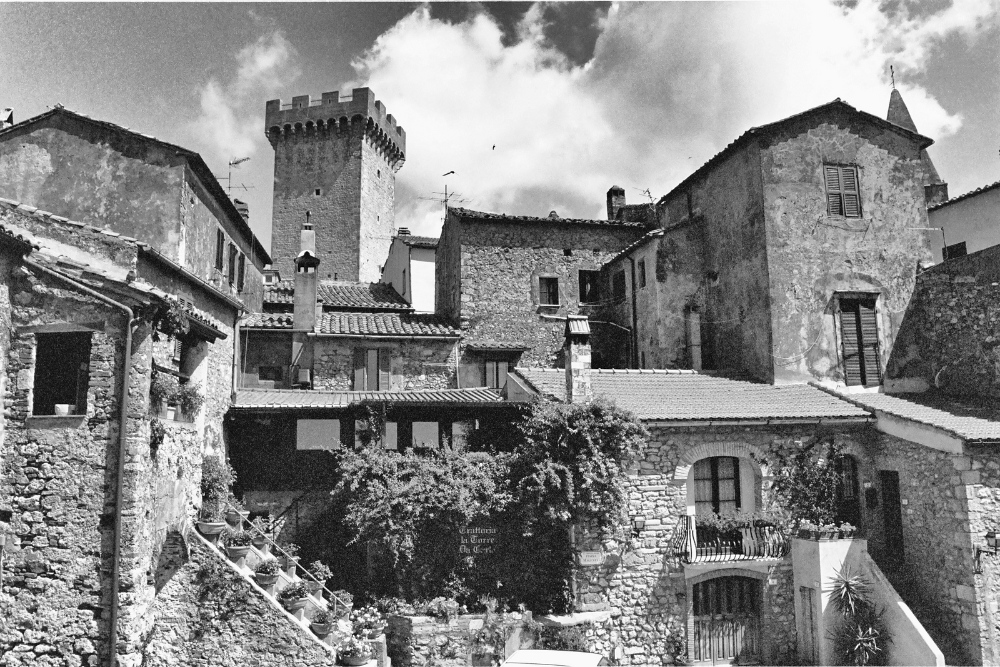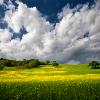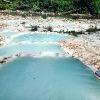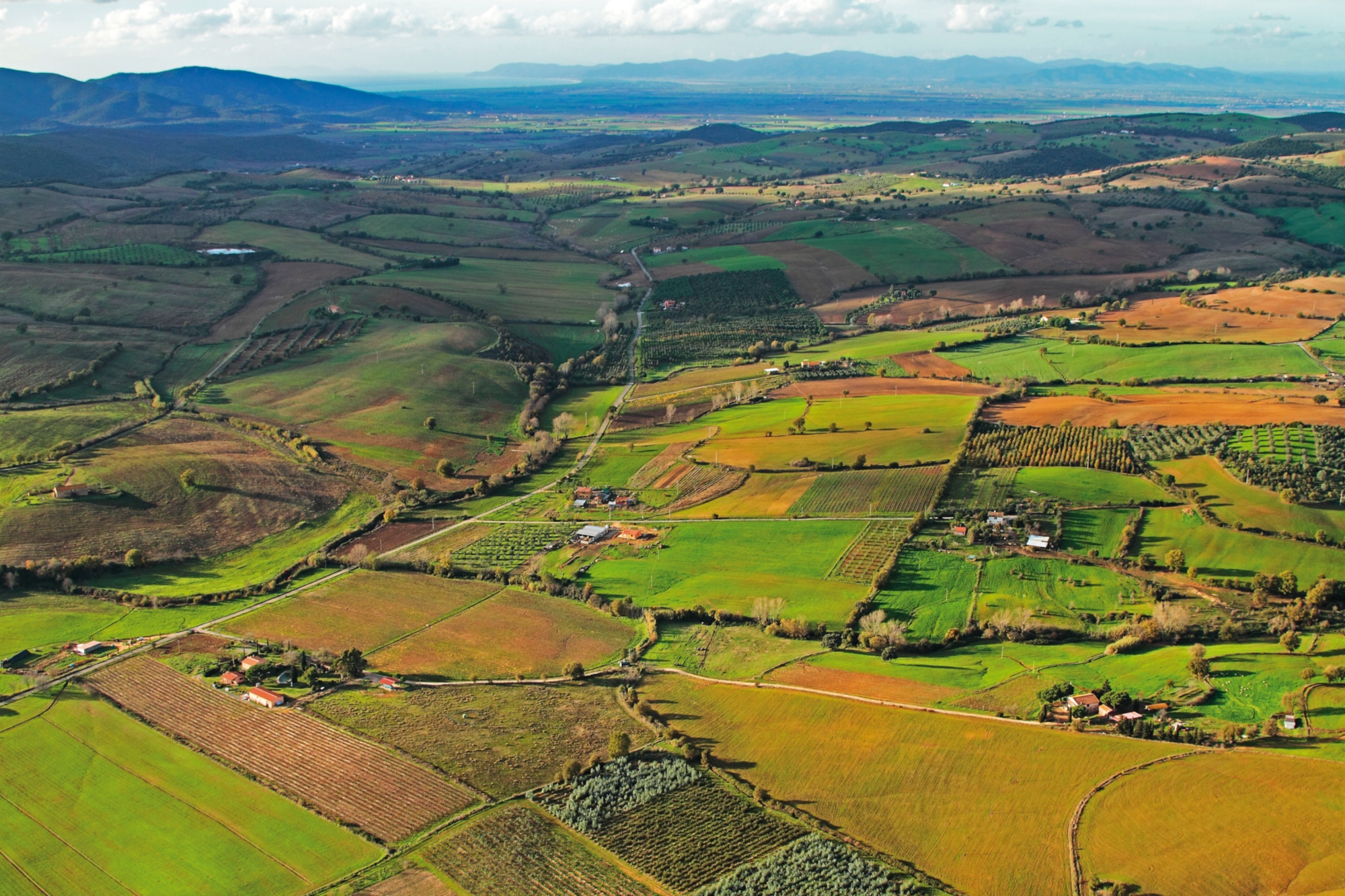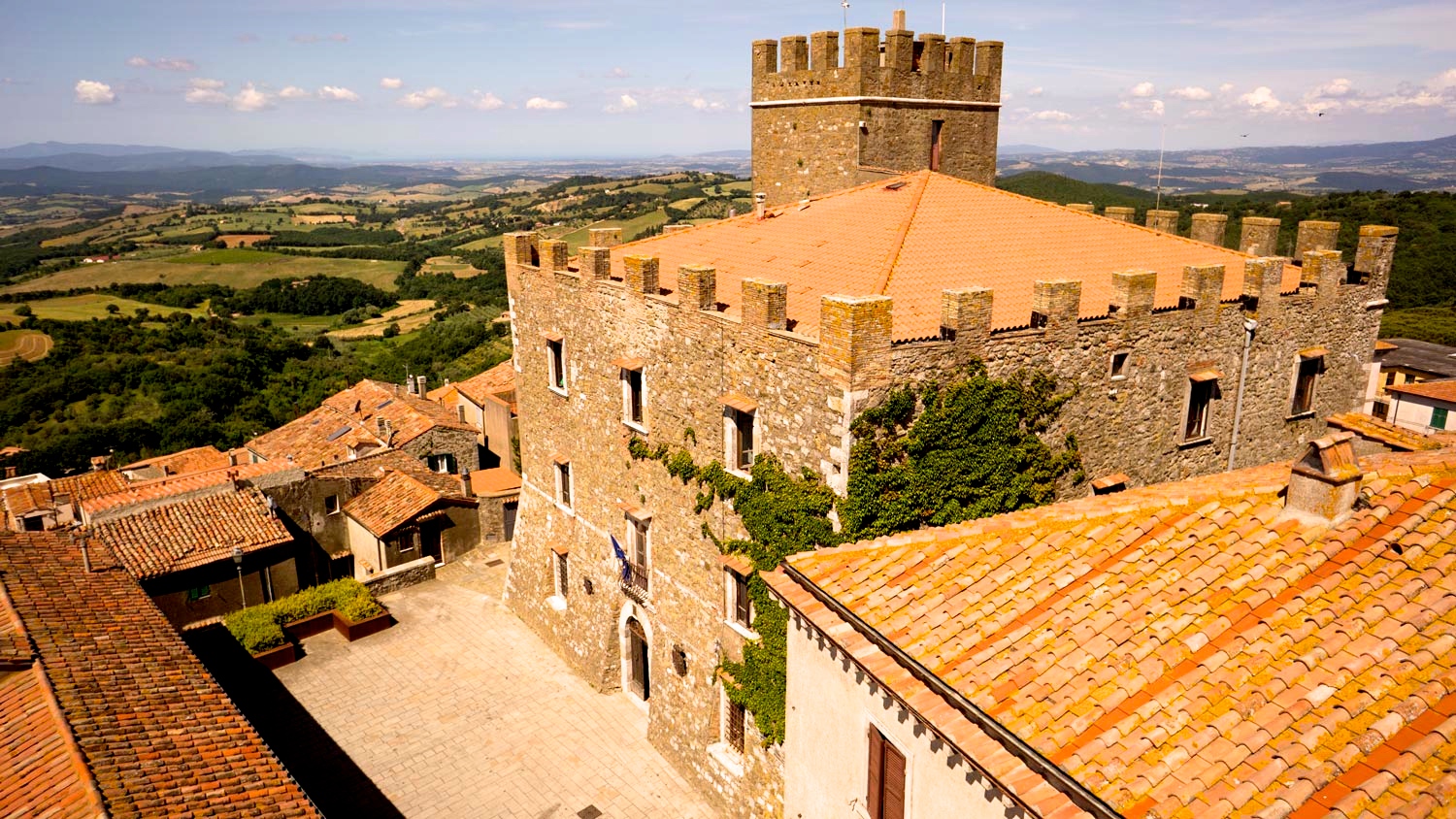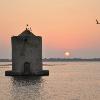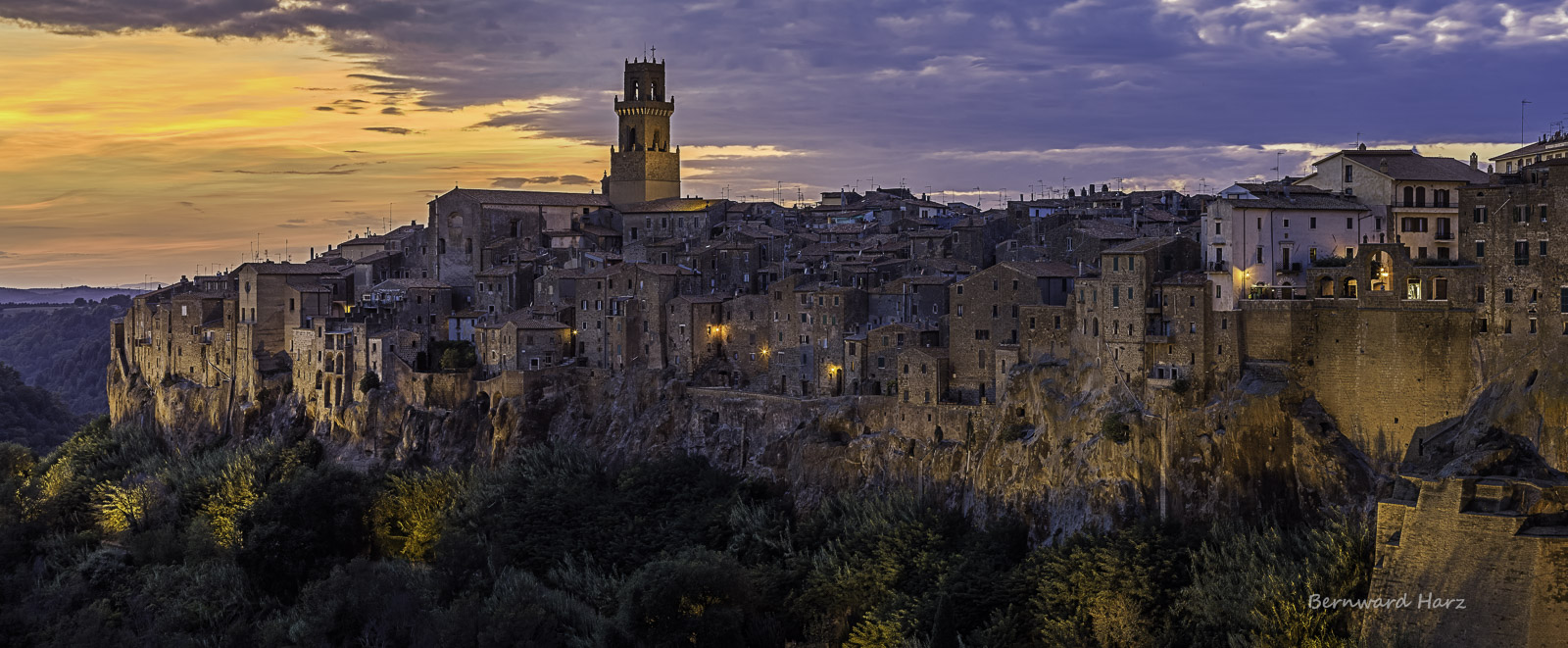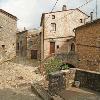The Cinigiano area spreads across the Valle dell’Ombrone, the final parts of the Val d’Orcia and the western slopes of the Monte Amiata, where, thanks to its fantastic position, you can marvel at the typical scenery of the surrounding Maremma.
Row upon row of hills rise from the sea up to the heights of mountains, in a continuous alternation of Mediterranean scrub, woods, pastures, vineyards, olive groves and hundreds of years old chestnut trees. The higher situated inhabited towns are over 700 metres above sea level.
Once a land ruled by the Aldobrandeschi family, the village was later governed by Siena and by the counts of Battifolle in the 14th century, finally becoming part of the Grand Duch of Tuscany in the mid 16th century.







